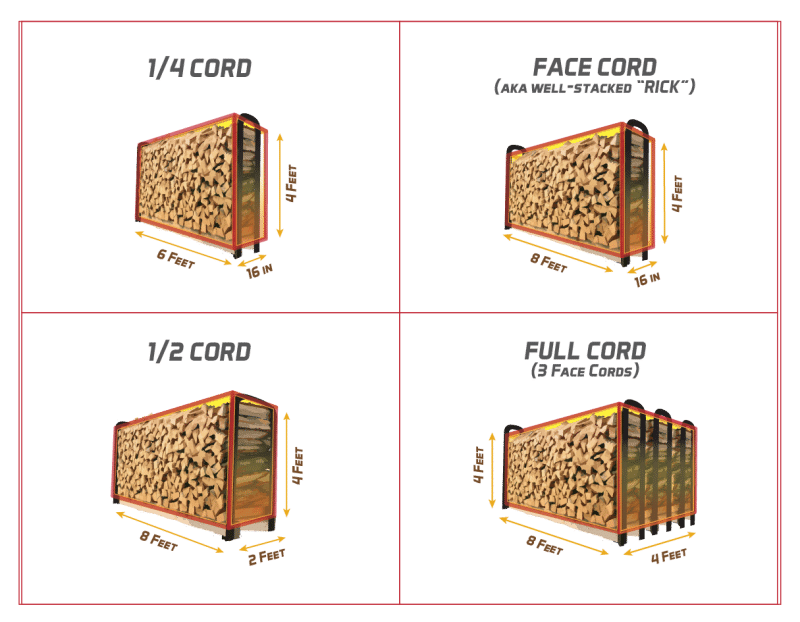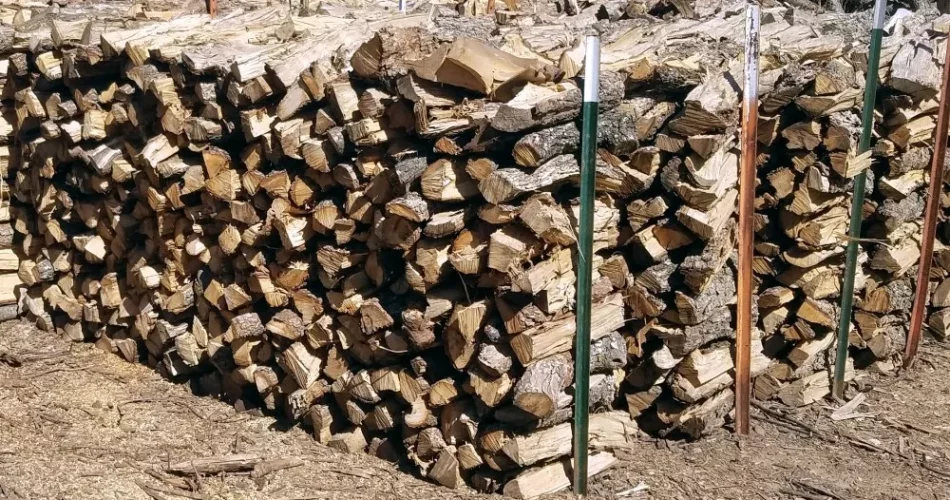When I first heard the term “rick of wood,” I was puzzled. It’s not a phrase you hear every day, yet it’s crucial for anyone dealing with firewood. Understanding what a rick of wood is can make all the difference in how you prepare for the colder months or manage your wood-burning needs.
A rick of wood, often confused with a cord, is a specific measurement of stacked firewood. It’s essential to know the difference to ensure you’re getting what you pay for when purchasing wood. While the term “rick” might vary by region, it’s typically a stack of wood measuring 4 feet high and 8 feet long, with the depth depending on the length of the logs.
Whether you’re a seasoned wood-burner or just starting, grasping these terms helps you make informed decisions and avoid any surprises during your next wood purchase.
Understanding Wood Measurements
Wood measurements play a crucial role in purchasing firewood, and understanding them ensures informed decisions. Firewood is typically measured in cords, with a full cord measuring 4 feet high, 4 feet deep, and 8 feet long, totaling 128 cubic feet. However, sellers often use different terms, leading to confusion.
A rick of wood generally constitutes a stacked pile the same height and length as a cord (4 feet by 8 feet) but varies in depth. For example, if logs are 16 inches deep, a rick equals one-third of a cord. Other common terms include face cords or stove cords, which have varying depths and might reference local or seller-specific practices.
Comparison tables help when evaluating different wood measurements:
| Term | Dimensions (Feet) | Cubic Feet |
|---|---|---|
| Full Cord | 4 x 4 x 8 | 128 |
| Rick (Example) | 4 x 8 x 1.33 | ~42.66 |
| Face Cord | Varies | Varies |
Knowing wood measurements, including ricks, ensures clear communication with sellers and helps avoid potential misunderstandings.
Definition of a Rick of Wood

A rick of wood represents a more flexible firewood measurement than a cord. Comprising the same height and length as a standard cord (4 feet high and 8 feet long), a rick’s depth depends on the length of the logs, making it variable. Typically, logs in a rick measure between 12 to 24 inches long. This variance provides a range in depth, contrasting with the consistent 4-foot depth in a cord, which retains 128 cubic feet in volume.
Determining the exact volume of a rick involves considering the log length. For instance, if a rick comprises 18-inch logs, it yields a total volume of approximately 64 cubic feet, essentially half the volume of a full cord. Knowledge of these measurements ensures transparency in transactions and prevents misconceptions with firewood suppliers. Understanding this variability is valuable whether you’re purchasing a small or large quantity of wood.
Comparing Rick with Other Measurements
Understanding the measurement of a rick helps navigate the complexities of purchasing firewood. Comparing it with other common measurements provides clarity.
Rick vs. Cord
A cord, a standardized unit, consists of 128 cubic feet of wood, measuring 4 feet high, 4 feet deep, and 8 feet long. A rick maintains the same height and length but doesn’t have a fixed depth, depending on log length. For instance, logs measuring 16 inches create a rick that’s about 1/3 of a cord. In contrast, a rick with 24-inch logs has a volume closer to half of a full cord. This means careful communication regarding log length with the supplier is essential.
Rick vs. Face Cord
A face cord, often synonymous with a rick, also measures 4 feet high and 8 feet long. However, the critical factor remains the log depth. Both terms describe a stack of firewood, but the actual volume varies. If the seller describes a face cord with 12-inch logs, it contains less wood than a face cord with 24-inch logs. So, verifying log length ensures accurate comparisons.
Factors Influencing Rick Size
Several factors influence the size of a rick of wood, affecting both its volume and utility.
Type of Wood
The type of wood impacts the overall volume and weight of a rick. Hardwood species, like oak and maple, provide more dense and heavier ricks compared to softwood species, such as pine or spruce, which are lighter and occupy more space. This results in different heating values per rick, as hardwoods generally burn longer and produce more heat.
Method of Stacking
The stacking method affects the perceived size and stability of a rick. A tightly stacked rick leaves fewer gaps between logs, increasing the actual wood content per stack. In contrast, a loosely stacked rick has more air spaces, which may seem larger but contains less usable wood. Choosing a consistent stacking method ensures accurate volume estimations and maximizes the efficiency of wood usage.
How to Measure a Rick of Wood
Measuring a rick of wood requires knowing its dimensions and understanding the variability in log length. A rick, sometimes called a face cord, measures 4 feet high and 8 feet long. The depth changes based on log length. For example, common log lengths are 12, 16, 18, and 24 inches, affecting the total volume.
- Determine Log Length: Identify the length of the logs in the rick. This influences the depth and, consequently, the volume of wood.
- Calculate Volume: Multiply the height (4 feet) by the length (8 feet) and the log length (in feet). For instance, 18-inch logs convert to 1.5 feet, resulting in a total of 48 cubic feet (4 x 8 x 1.5).
- Compare with a Full Cord: Knowing a full cord equals 128 cubic feet provides context. A rick of 18-inch logs is approximately 64 cubic feet, roughly half a full cord.
By knowing these steps, one can measure a rick accurately and understand its value compared to a standard cord.
Common Uses for a Rick of Wood
Heating homes is one of the primary uses for a rick of wood. During colder months, many people rely on wood as a cost-effective heating source. A rick provides enough firewood to supplement heating systems efficiently.
Cooking with a rick of wood is popular for those who enjoy wood-fired ovens and grills. It offers an authentic flavor to dishes, making it a favorite among culinary enthusiasts.
Camping enthusiasts use a rick of wood for campfires. Its manageable size makes it ideal for transporting to campsites, offering warmth and ambiance.
Woodworking projects sometimes utilize a rick of wood. Artisans and hobbyists may find it useful for creating rustic furniture or decorative items.
Backyard bonfires benefit from a rick of wood as well. It supplies ample fuel for gatherings, enhancing social experiences without running short.
Conclusion
Understanding a rick of wood is crucial for anyone dealing with firewood. It helps ensure you’re getting the right amount of wood for your needs, whether you’re heating your home or enjoying a backyard bonfire. By knowing how a rick compares to other measurements like a cord or face cord, you can communicate clearly with sellers and avoid any surprises.
This knowledge empowers you to make informed decisions and maximize the value of your firewood purchases. Whether you’re a seasoned firewood user or just starting out, recognizing the nuances of wood measurements can make all the difference in your buying experience.



Comments